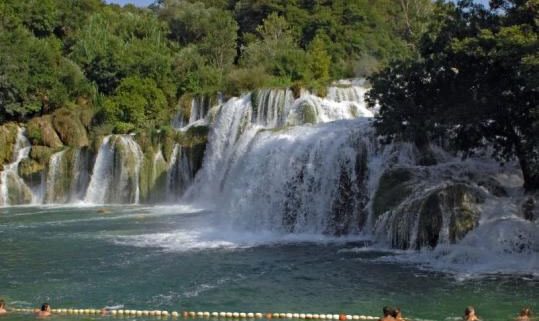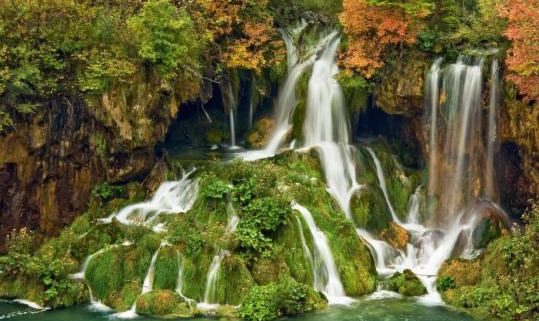Nacionalni parkovi

Nacionalni park Krka
Krška ljepotica Krka u svojim je jezerima mirna i tiha, a na brojnim kaskadama zaglušno bučna i razigrana. Njezina ljepota i raznolikost podsjećaju na veličanstvenu orkestralnu simfoniju pod Stvoriteljevom dirigentskom palicom.
Krka tisućama godina svojeglavo dubi svoj put kroz kamen i stvara svoje znamenite slapove. Specifične sedrene kaskade njezinih slapova vrlo su rijetke u svijetu. Godine 1985. iznimna je ljepota prepoznata i zaštićena pa je 46 kilometara toka rijeke Krke na 111 km2 proglašeno nacionalnim parkom.


Nacionalni park Plitvička jezera
Nacionalni park Plitvička jezera, ubraja se u najljepše prirodne znamenitosti Europe. To je šumovit planinski kraj kroz koji se, jedno ispod drugog, niže šesnaest prekrasnih jezera i jezeraca kristalne modrozelene boje. Vodom ih pune mnoge rječice i potoci, međusobno spojene pjenušavim kaskadama i šumnim slapovima. Tijekom tisućljeća voda ovih jezera je kršila, nagrizala i otapala stijene i korita kojima je tekla.
Taloženjem kalcijeva karbonata iz protočne vode i posredovanjem posebnih vrsta algi i mahovina, nastala je i danas nastaje na mjestima prirodnih prepreka šupljikava vrsta kamena – sedra ili travertin. Stalnim taloženjem ovog materijala rastu pregrade sa slapovima, zastorima, kanalima i kaskadama.
Taj talog oblaže bjelkastim slojem i skamenjuje palo drveće, kamenje na dnu jezera, obale, te daje vodi posebnu iskričavu ljepotu. Svojom mehaničkom snagom voda istodobno razara pojedine sedrene barijere. Stoga je čitav proces osedravanja i ojezeravanja vrlo dinamičan. U biti ovdje je riječ o biodinamičkom procesu koji je i prvorazredna atrakcija i izniman i zanimljiv znanstveni fenomen.
Proces prirodne izgradnje traje i danas u uvjetima neporemećenih ekoloških odnosa. Uz jezera ima nekoliko špilja, a nađeni su i ostaci pretpovijesnih boravišta. Nacionalni park prostire se na području od 29482 hektara, od čega na šume otpada 22308, vode 217, a na travnjake sa seoskim prostorima 6957 hektara. Visoka šuma mjestimično poprima prašumske oblike, a tom prirodnom bogatstvu odgovara i šarolikost biljnog i životinjskog svijeta. Uz mnogobrojne vrste ptica i sitne divljači, u Parku ima srna, medvjeda, vukova, divljih svinja, divljih mačaka, a u vodama pastrva. Lov, ribolov i kupanje u jezerima nisu dozvoljeni.
Dva su ulaza u Nacionalni park (Gornja i Donja jezera). Na panoramskoj karti ulazi su označeni brojkama 1 i 2. Velike informativne ploče na ulazima pružaju posjetiteljima sve osnovne podatke o načinju kretanja Nacionalnim parkom, a što se tiče staza, vidikovaca, parkirališta, ugostiteljskih objekata i hotela, pošte, autobusnih postaja, ambulante i dr. Staze su također ucrtane na ulaznicama koje posjetitelji kupuju pri ulazu. Sve dodatne informacije (smještaj, hrana, povezanost s obalom i drugim dijelovima Hrvatske, prometne informacije, itd) moguće je dobiti od djelatnika Parka u informacijskim centrima.

